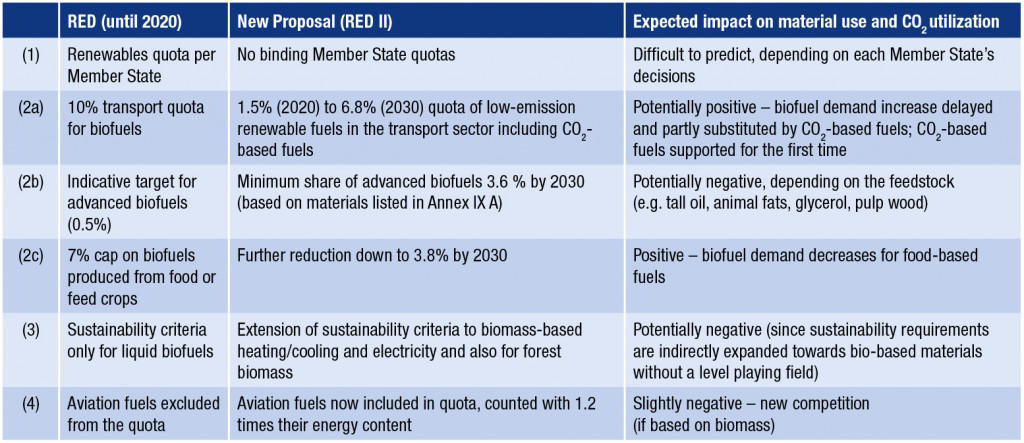The RED II Proposal and Its Impact on the Bio-based Material and CO2 Utilization Sector
nova-Institute analysed the new Commission proposal with a view on the bio-based materials sector and present the most important findings in a paper
Open doors for CO2-based fuels, but non-level playing field for the bio-based material sector continues and threatens access to tall oil, animal fats and glycerol by the chemical industry as well as access to pulp wood by the forest industry.
On 30 November 2016, the European Commission published a proposal for the recast of the Renewable Energy Directive (RED), providing a potential outline of the Union’s renewable energy framework for the timeframe 2021 to 2030. This proposal is also known as the “RED II proposal”.
The new proposal sets the overall target of a renewables share in the EU’s energy consumption at 27% by 2030 and includes the sectors electricity, heating and cooling as well as transport. Several of the new provisions, e.g. a cap of fuels produced from food or feed crops to max. 3.8%; and the ambitious goals for advanced biofuels have been commented on and discussed by a multitude of stakeholders in press releases and official statements.1
At nova-Institute, we are always concerned with the question of how the revisions in energy policy will impact the bio-based material sector. We have therefore analysed the new Commission proposal with a view on the bio-based materials sector and present the most important findings in a paper. In addition, we also evaluated the proposal’s coverage of CO2-based fuels, as we are convinced of their huge potential. The latter will have strong impacts on bio-based fuels and energy and, indirectly, also on the material sector.
As a whole, the proposal can be seen as an attempt to assemble a wide range of support mechanisms for a multitude of energy forms under one roof. The first-ever comprehensive inclusion of CO2-based fuels means that the available support will be spread between more forms of energy supply than before, which are less dependent on biomass. From a bio-based materials point of view, this gives some hope for improved access to biomass and a fairer competition. However, there is still a long way to go towards a completely level playing field and the optimal use of resources in Europe. Especially for feedstocks that are accepted for “advanced biofuels”, the situation has potentially worsened.
The following table summarises our results. A more detailed commentary on the RED II proposal is available for free at www.bio-based.eu/policy

Download this press release as PDF file: 17-04-12 PR RED II Proposal and Impact
1 See for example http://www.euractiv.com/section/energy/news/commission-under-fire-over-post-2020-biofuels-targets, http://biofuels-news.com/display_news/11460/finnish_government_satisfied_with_new_eu_red_proposal, http://biofuels-news.com/display_news/11444/ec_releases_red_ii_proposes_firstgeneration_biofuels_phaseout_and_new_sustainability_criterion_for_forest_biomass? (all accessed 2017-04-12)
Source: nova-Institut GmbH, press release, 2017-04-12.
